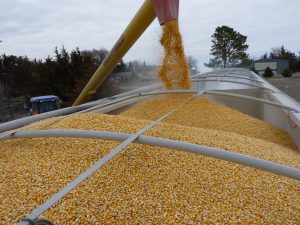Paul Goeringer, Agriculture Law Legal Specialist
University of Maryland Extension
This article is not a substitute for legal advice. Reposted from the Maryland Agriculture Risk Management Blog
Several of you continue to ask me when you might see checks from the Syngenta corn seed settlement. In late 2018, the court approved the settlement order for the $1.51 billion MIR162 Syngenta settlement. Based on the final order, payments to producers should have started going out in the second quarter of 2019, but this did not happen. On January 3, 2020, the federal district court in Kansas approved the final settlement. Growers have one last step: provide the claims administrator with an IRS W-9 form either online or by mailing a form into Corn Seed Settlement Program Claims Administrator, P.O. Box 26226, Richmond, Virginia 23260.
The settlement includes all U.S. corn farmers, including those who opted out of the original class-action suit and those who grew Agrisure Duracade corn and Agrisure Viptera corn varieties. The settlement also includes landlords who based rental rates on yield or price, such as a flex-lease based on yield or price or a crop-share lease. Fixed cash landlords are not eligible to participate. The period included in the settlement is September 15, 2013, through the 2018 crop year.
The settlement includes four classes:
- Class 1: Growers and eligible landlords who did not use Duricade or Viptera,
- Class 2: Growers and eligible landlords who did use Duricade or Viptera,
- Class 3: Grain handlers, and
- Class 4: Ethanol producers.
Claims to three of the four classes will have limited recovery amounts:
- Class 1 will receive a minimum of $1.44 billion, with the bulk of the settlement going to corn growers and eligible landlords who did not grow Duricade or Viptera corn seeds.
- Class 2 will be limited to $22.6 million,
- Class 3 will be limited to $29.9 million, and
- Class 4 will be limited to $19.5 million.
As a part of the settlement order, the court set aside $503,333,333.33 for attorneys’ fees.
Based on the recent information, producers should be receiving Notice of Determination forms showing the producer’s portion of the settlement. Expects checks to go out later in 2020. How much can you expect to receive in this settlement? That is still not clear and something I cannot accurately answer.
This latest move means this settlement process should be winding up. Many of the ongoing appeals appear to be resolving themselves with this settlement. If the situation changes, I will provide further information.

